CBSE Class 10 Answered
A monochromatic point source of light O is seen through a rectangular block ABCD. Paths of 2 rays in and outside the block are shown in the figure below . (a) Does monochromatic source appear to be nearer or farther, with respect to surface AB? (b) How does the shift in (a) depend upon the thicness AB of the slab ? (c) justify your answer in (b) with an appropriate diagram ? (d) For the same rectangular block which colour from the visible spectrum will produce maximum shift ? ( PLS DEAER EXPERTS ANS ALL 4 PARTS WITH CLEAR DIAGRAM URGENTLY )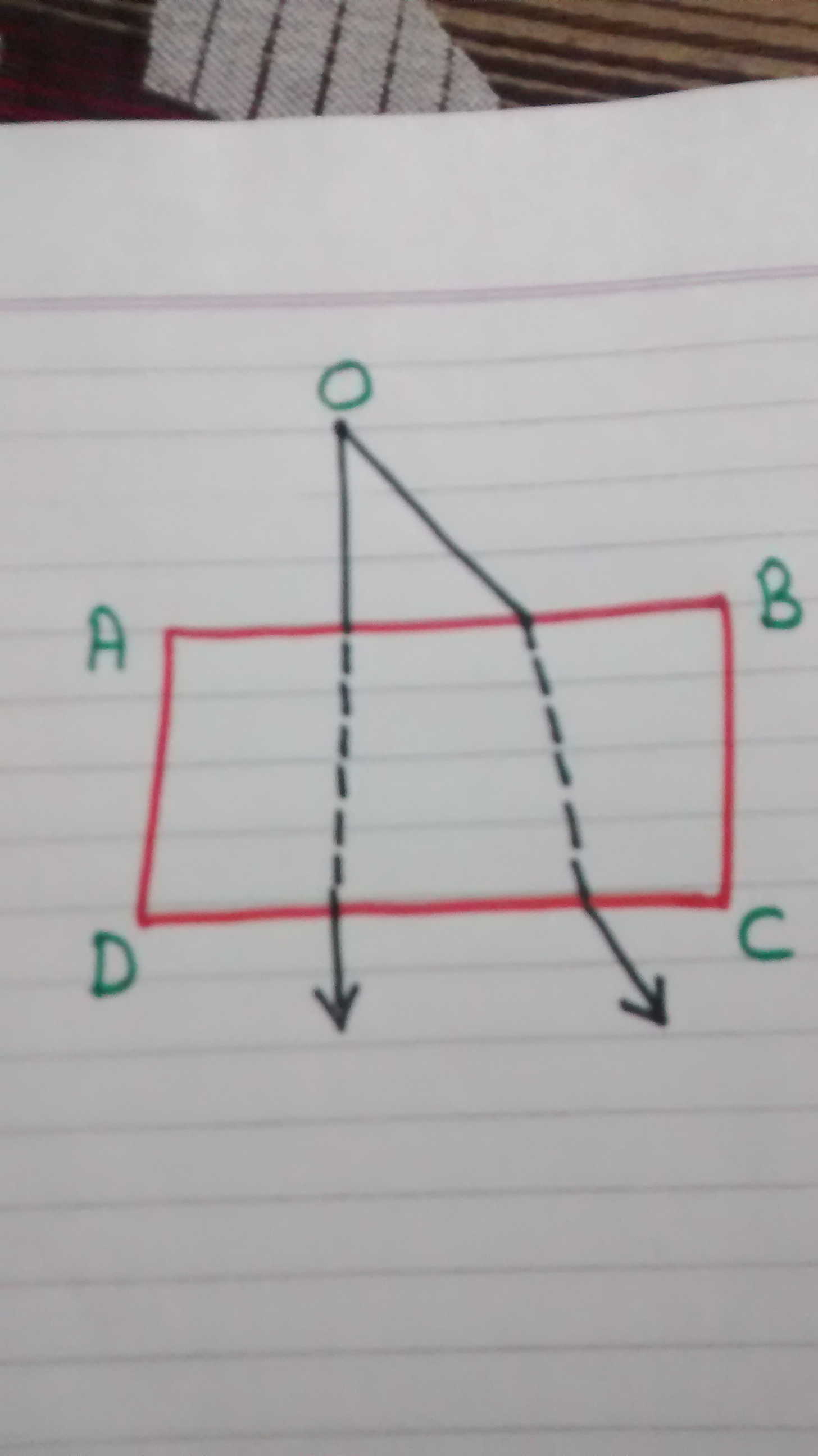

Asked by Vikas | 08 Aug, 2016, 10:45: PM
(i)The source will appear nearer to the surface AB.
(ii) The shift increases with increase in the thickness of side AD of the glass block. However, there is no effect on the shift with the increase in thickness of side AB.
(iii)
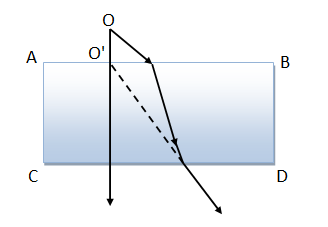
We can see from the figure that with increase in the thickness of the glass the shift OO' increases.
(iv) Shift of violet colour would be maximum.
Answered by Yashvanti Jain | 09 Aug, 2016, 11:41: AM
Application Videos
Concept Videos
CBSE 10 - Physics
Asked by manishapatel43387 | 25 Nov, 2021, 07:37: PM
CBSE 10 - Physics
Asked by Trisha Gupta | 22 Nov, 2021, 01:03: AM
CBSE 10 - Physics
Asked by burhanraja55 | 27 Oct, 2021, 03:40: PM
CBSE 10 - Physics
Asked by Trisha Gupta | 21 Aug, 2021, 06:48: PM
CBSE 10 - Physics
Asked by chalamsimaha | 15 Feb, 2021, 08:37: PM
CBSE 10 - Physics
Asked by jasminekhanna27 | 16 Oct, 2020, 11:36: AM
CBSE 10 - Physics
Asked by arindeep.singh | 23 Sep, 2020, 09:08: AM
CBSE 10 - Physics
Asked by marygreata3 | 16 Aug, 2020, 07:05: PM
CBSE 10 - Physics
Asked by nehchalrs15 | 05 Aug, 2020, 10:07: PM
CBSE 10 - Physics
Asked by jonysin042 | 11 Jun, 2020, 08:46: AM

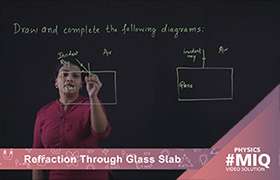
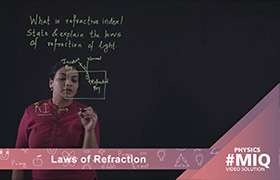


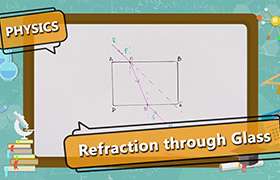

 .
.